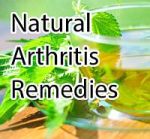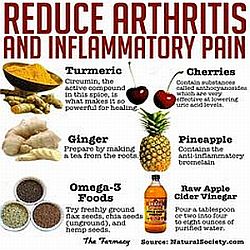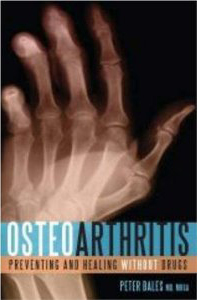Underlying Causes of Arthritis in People and Animals
 Hepatitis B vaccine might be followed by various rheumatic conditions and
might trigger the onset of underlying inflammatory or autoimmune rheumatic diseases.
Bonnie Dunbar, PhD, a Texas cell biologist and vaccine researcher, says, "It takes weeks and sometimes
months for autoimmune disorders such as rheumatoid arthritis to develop following
vaccination". The National Vaccine Information Center (NVIC) released figures showing that the number
of hepatitis B vaccine-associated adverse events and deaths reported in US children under the age of 14 is exceptionally high,
significantly outnumbering the reported cases of hepatitis B disease in that same age group.
Hepatitis B vaccine might be followed by various rheumatic conditions and
might trigger the onset of underlying inflammatory or autoimmune rheumatic diseases.
Bonnie Dunbar, PhD, a Texas cell biologist and vaccine researcher, says, "It takes weeks and sometimes
months for autoimmune disorders such as rheumatoid arthritis to develop following
vaccination". The National Vaccine Information Center (NVIC) released figures showing that the number
of hepatitis B vaccine-associated adverse events and deaths reported in US children under the age of 14 is exceptionally high,
significantly outnumbering the reported cases of hepatitis B disease in that same age group.
Klebsiella activates an autoimmune reaction
Ronald Hoffman, M.D. - "Bacteria-induced immune reactions.
It’s also been shown that some infectious organisms may not directly induce
arthritis but can set off an immune reaction in the body that produces arthritic
symptoms of inflammation in the joints. The Klebsiella bacteria, for example,
make up part of the normal intestinal flora that inhabit the gut, usually without
any adverse effects. But in a certain genetically defined section of the population,
Klebsiella activates an autoimmune reaction called ankylosing spondylitis, which
involves inflamed, arthritic joints. There are no bacteria in the joints themselves,
but the immune response triggers the symptoms."
Two broad categories of immune system disorders or dysfunctions:
Inappropriate immune response; Excessive or lacking.
- Immunodeficiency (lacking or deficient) - when the
immune system does not recognize invaders as being undesirable and therefore
does not mobilize to destroy them.
- Autoimmunity (excessive or self-destruction) - when
the immune system fails to recognize 'self' as friendly and mounts an attack on itself"

Side Effects and Ineffectiveness of Drug "Therapy"
Ronald Hoffman, M.D. - "Nowhere in medicine do we see sharper
distinctions between conventional and alternative therapies
than in the case of arthritis, especially Rheumatoid Arthritis. The high prevalence
of poor outcomes and undesirable side effects in patients receiving conventional
therapy and the beneficial results obtained by patients using alternative therapies
suggests that the latter should be given greater attention than they are getting.
Even by the admission of many arthritis experts, conventional
therapy for arthritis, especially for Rheumatoid Arthritis, is far less
than optimal. The first step is often palliative
therapy with aspirin or other nonsteroidal anti-inflammatory drugs (NSAIDs)
such as Motrin, Naprosyn, Voltaren, Clinoril, and, most recently, Ansaid and
Relafen. These first-line drugs quench pain and stop inflammation to a certain
extent, but they have little if any beneficial effect on the ultimate clinical
course of arthritis. Some studies show that they may actually hasten joint damage
.These drugs possess several other unfortunate side effects, especially
the tendency to cause stomach irritation and even severe gastrointestinal bleeding.
Steroid injections for arthritis and bursitis are another favorite tool of
orthopedists. As we’ve noted, they are progressively less effective, and
repeated injections can damage joints and induce osteoporosis. In the case of Rheumatoid Arthritis,
doctors often prescribe more powerful second-line drugs. These are the so-called DMARDs (disease-modifying
antirheumatic drugs). These agents are designed not just to control symptoms
but actually to delay progression of the disease. Unfortunately, many of them
can cause severe adverse effects . They include such drugs
as hydroxychloroquine sulfate, gold, penicillamine, sulfasalazine,
prednisone, azathioprine, and methotrexate. The
last-named is a powerful chemotherapy drug used in the treatment of cancer.
Some of these drugs possess potent immunosuppressive effects."
Low Level of Glutathione Linked to Arthritis
Research has shown that individuals who have low levels of glutathione are susceptible
to chronic illness such as arthrtitis and rheumatoid arthritis
Dr. Gutman, M.D - "Glutathione
is not yet a household word, but it soon will be, now that we know how important
this substance is" He explains the
critical role of glutathione in the maintenance of health
and wellness with Rheumatoid Arthritis. Those with arthritis pain will likely
benefit from raised glutathione levels and experience relief from many of their
Rheumatoid Arthritis symptoms. Being able to raise glutathione easily, conveniently
and safely through nutrition is a breakthrough health discovery for the arthritic
pain of Rheumatoid Arthritis. Only Immunocal is clinically proven to raise the
glutathione level in a safe, effective and convenient way."
"On the fourth day of taking ,
I remember thinking that I felt no different , but at 8:30 that night I got
out of my car like I was twenty one , full of energy. It was an incredible feeling
especially considering the fact that I had Chronic Fatigue Syndrome due to my
rheumatoid arthritis. On day seven my hands looked and felt normal. They had
looked like lobster claws, red, swollen, and painful. I must have looked at
my hands every ten minutes for the next week with a big smile. Amazing!! . What
happened about three weeks ago , six months after I
started taking Immunocal, inspired me to tell my story. My psoriasis started to disappear, after thirty-six
years. I had tried everything I could think of, even the doctors told me nothing
would ever work, I still tried." - Henry Cheung, Ph.D.
"I am a (100 lb) 85 year old masters swimmer. I have also been struggling with arthritis for the past 20 years.
I have to wear a brace on my wrist as a bone is missing in my thumb. I was first introduced toImmunocal by Paul Rothe in the
hot tub at our local rec center. I have been taking two packs a day every morning
for almost a year. Since taking Immunocal, I have experienced more energy and less
pain from my arthritis. I work out and swim almost every day, and I have just
returned from the Canadian Masters Swimming Championships (May, 2004). In the
85–89 age category, I set a Canadian record for the 100 metrer breaststroke (3:01:49)
and knocked a second off the 200 meter backstroke (6:56:00), which is one full
minuite better than my personal best last fall! I am already working toward
getting down to the 5–minute record for the World Masters Championships in Edmonton
for 2005." Marion D.

Animals with Arthritis - Natural Solution
 Arthritis and osteoarthritis in dogs and
cats can be cured by a program using nutritional supplements according to
Veterinarian Brian Beale DVM. Arthritis need not ruin the lives of our animal companions. A combination of
nutritional supplements and immune support, a
healthy diet, and mineral supplements can halt,
reverse, or even cure the pain of arthritis. This is the painless,
low-cost, natural approach that countless pet owners can use at home.
Arthritis and osteoarthritis in dogs and
cats can be cured by a program using nutritional supplements according to
Veterinarian Brian Beale DVM. Arthritis need not ruin the lives of our animal companions. A combination of
nutritional supplements and immune support, a
healthy diet, and mineral supplements can halt,
reverse, or even cure the pain of arthritis. This is the painless,
low-cost, natural approach that countless pet owners can use at home.
A suppression of the immune system can occur when the body's system is compromised by immune
suppressing factors. These can include over vaccination, vaccinating
during a bitch's heat cycle or pregnancy, antibiotics, use of steroid drugs, protein malnutrition, insufficient
calories, vitamin or mineral insufficiencies, hormonal fluctuations, virus and disease and other specific drugs.
Other illness and systemic diseases can also lower the immune system, such as diabetes, renal failure,
systemic lupus erythematosus and neoplasia.
 Pets are just as susceptible to inflammatory
joint disease and ailments as their human companions. Pets of all ages often become afflicted with joint problems due
to contaminated food, household and environmental toxins, injury and genetics.
Pets are just as susceptible to inflammatory
joint disease and ailments as their human companions. Pets of all ages often become afflicted with joint problems due
to contaminated food, household and environmental toxins, injury and genetics.
A suppressed immune system leaves the dog with poor ability to fight bacteria and virus, prone to infections and poor
health, and leaves a dog susceptible to cancer and poor ability to fight insults of the environment, such as pesticides,
herbicides and other pollutants. The dog lacks the ability to develop normal immunity to everyday exposure to routine
infections that other dogs can fend off naturally.
Over-active Immune System This condition is called autoimmune disease. The body literally overreacts to
normal agents found in the body, and develops antigens to destroy them. The immune system goes into
overdrive, and not only tries to destroy the cells it may see as bacteria, but can start to destroy
normal red blood cells. The body will begin to see these cells as foreign, and react by developing
skin allergies, hot spots, teary eyes and other common symptoms of allergic response. However, the
autoimmune response can go further, creating other autoimmune disorders.
Inflammation Root Cause of Arthritis
Inflammation is a complex process that causes swelling, redness, warmth,
and pain. It's the body's natural response to injury and plays an important
role in healing and fighting infection. Joint injury can be caused by trauma
or by the wear and tear of aging. But in many forms of arthritis, injury is
caused by the uncontrolled inflammation of autoimmune disease, in which the
immune system attacks the body's own tissues. In severe cases, all joint tissues,
even bone, can be damaged.
 In rheumatoid arthritis, inflammation accompanies thickening of the synovial
membrane or joint lining, causing the whole joint to look swollen due to swelling
in the joint capsule. The inflamed joint lining enters and damages bone and
cartilage, and inflammatory cells release an enzyme that gradually digests bone
and cartilage. Space between joints diminishes, and the joint loses shape and
alignment.
In rheumatoid arthritis, inflammation accompanies thickening of the synovial
membrane or joint lining, causing the whole joint to look swollen due to swelling
in the joint capsule. The inflamed joint lining enters and damages bone and
cartilage, and inflammatory cells release an enzyme that gradually digests bone
and cartilage. Space between joints diminishes, and the joint loses shape and
alignment.
Perhaps the most important inflammatory conditions to affect humanity are
the varieties of arthritis and rheumatism. Throughout the world herbal medicine
is used in its treatment. Arthritis is a general term for approximately 100
named diseases that produce either inflammation of connective tissues, particularly
in joints, or noninflammatory degeneration of these tissues. The word simply
means joint inflammation, but because other structures are also affected, the
diseases are often called connective tissue diseases. The terms rheumatism and
rheumatic diseases are also used. Besides conditions so named, the diseases
include gout, lupus erythematosus, ankylosing spondylitis, degenerative joint
disease, and many others. Causes of these disorders include immune-system reactions
and the wear and tear of aging, while research indicates that the nervous system
may often be equally involved. About one out of seven Americans exhibit some
form of arthritis. Many of these diseases are characterized by inflammation
in the affected tissue. The usual signs of inflammation (warmth, redness, swelling,
and pain) are often present.
In some conditions, the inflammation is an immune reaction. This may be the
body's defense against invading microorganisms, but often the immune reaction
against the body's own tissue is of unknown cause. The body seems to react against
itself rather than against an invading microorganism. Anti-self antibodies react
with intact connective tissue and synovial membranes and thus cause inflammation.
A common auto-immune form of arthritis is rheumatoid arthritis. Whilst the symptoms
of rheumatoid arthritis are due to inflammation of the connective tissues, the
cause is not at all clear. Characteristically the synovial membranes, or inner
linings of the joint capsules, are chronically inflamed. The synovial mass proliferates
and thereby destroys cartilage, bone and adjacent structures. Widespread inflammation
may involve other tissue leading to painful joints, loss of mobility, and a generalized soreness and depression.
Blood tests often reveal the presence of rheumatoid factors, proteins produced by the immune system in response to
the rheumatic process.
The connection between inflammation and heart disease, arthritis, and other
chronic ailments has become increasingly clear. Many food allergies and poor
dietary choices over stimulate the immune system and cause inflammatory responses
that erode the body’s wellness and pave the path for ill health. Based on her
naturopathic practice, Jessica Black has devised a complete program for how
to eat and cook to minimize and even prevent inflammation and its consequences.
The first part of the book explains the benefits of the anti-inflammatory diet
with an accessible discussion of the science behind it. The second half contains
108 recipes. The author offers many substitution suggestions and includes a
healthy ingredient tip with each recipe. Most of the dishes can be prepared
quickly and easily by even novice cooks. A week of sample menus for summer months
and another for winter are included, as well as a substitutions chart, allowing
readers to modify their favorite recipes to increase their healing potential.
Anti-inflammatory Property of Marine Phytoplankton
Marine phytoplankton not only heals
the cell membrane, thus reducing inflammatory messengers, but it also increases
the ability of our bodies to get rid of toxins that lead to inflammation, oxidation,
and mitochondrial dysfunction. Healing these processes reduces pain.
Marine phytoplankton also have a lot of anti-inflammatory molecules that directly neutralize
the messages of inflammation. Of course, when such blockage comes from natural
food ingredients, such as minerals, antioxidants (zeathanthines, etc.) flavones,
isoflavones, curcumins, etc., one does not find such catastrophic side effects
as we do with the pharmaceuticals mentioned above.

The Role of Diet in Arthritis, Osteoarthritis
 For years people have suspected that foods are an important factor in the
development of rheumatoid arthritis. Many notice an improvement in their condition
when they avoid dairy products, citrus fruits, tomatoes, eggplant and certain
other foods. Initially, the evidence was anecdotal. A woman from the Midwest
once suffered from painful arthritis. Today she is a picture of health, thin
and athletic, and her arthritis is totally gone. It seemed that dairy products
were to blame for her arthritis, for when she eliminated them from her diet,
the arthritis disappeared completely. Another woman, from Wisconsin, also found
that her arthritis was clearly linked to dairy products. Although she had been
raised on a dairy farm, she learned that staying away from dairy products was
the key to relieving her symptoms.
For years people have suspected that foods are an important factor in the
development of rheumatoid arthritis. Many notice an improvement in their condition
when they avoid dairy products, citrus fruits, tomatoes, eggplant and certain
other foods. Initially, the evidence was anecdotal. A woman from the Midwest
once suffered from painful arthritis. Today she is a picture of health, thin
and athletic, and her arthritis is totally gone. It seemed that dairy products
were to blame for her arthritis, for when she eliminated them from her diet,
the arthritis disappeared completely. Another woman, from Wisconsin, also found
that her arthritis was clearly linked to dairy products. Although she had been
raised on a dairy farm, she learned that staying away from dairy products was
the key to relieving her symptoms.
Related: Learn about The Incredible Healing Powers
of Raw (Living) Foods and Juices
A 1989 survey of over one thousand arthritis patients revealed that the foods
most commonly believed to worsen the condition were red meat, sugar, fats, common
table salt, caffeine. All foods in the nightshade family ( which include potatoes,
tomatoes, eggplant etc ) should be eliminated as they contain solinaise which
inflames the fluid in the joints. Once the offending food is eliminated completely, improvement usually comes within
a few weeks. Dairy foods are probably the principal offender, and the problem
is the dairy protein, rather than the fat, so skim products are as much a problem
as whole milk.
An increasing volume of research shows that certain dietary changes do in
fact help. For example, polyunsaturated oils and
omega-3 supplements have a mild beneficial
effect, and researchers have found that vegan diets are beneficial. Several
studies have also shown that supervised fasting
can be helpful. Iron acts as a catalyst, encouraging the production of these
dangerous molecules. Vitamins C and E, which are plentiful in a diet made of
vegetables and grains, help neutralize free radicals. Meats supply an overload
of iron, no vitamin C, and very little vitamin E, whereas vegetables contain
more controlled amounts of iron, and generous quantities of antioxidant vitamins.
As well as being helpful in preventing arthritis, antioxidants may also have
a role in reducing its symptoms. Some arthritis treatments, including non-steroidal
anti-inflammatory drugs, work at least in part by neutralizing free radicals.
For the most part, however, vitamins and other antioxidants will be of more use
in preventing damage before it occurs, rather than in treating an inflamed joint.
Ronald Hoffman, M.D.- "Certain individuals may have trouble
digesting or tolerating other types of foods, including wheat, corn, and dairy
products, and may develop chronic aches that resemble arthritis. The condition
may not be a classic allergy but a kind of intolerance in which digestive fragments
of certain foods may induce an immune response or mimic other metabolic components
of the body, causing chronic illness. One diet that works with some people is
to eliminate the nightshade foods, which include tomatoes, potatoes, eggplant,
peppers, paprika, and cayenne. Tobacco is also a nightshade. In fact, there’s
an animal model for arthritis: if cows are mistakenly given fodder that is heavily
laced with wild-growing nightshade family plants, they actually develop a type
of osteoarthritis. Anyone who suffers from arthritis could try avoiding these
foods for a month and then gradually reintroducing them to see whether they
affect the symptoms."
Natural Healing Modalities for Rheumatoid Arthritis
Researchers at the Glasgow homeopathic Hospital U.K. demonstrated in a small-scale
controlled study that homeopathy may be particularly beneficial for patients
who suffer from rheumatoid arthritis. Twenty-three patients with rheumatoid
arthritis were given conventional treatment using anti-inflammatory medications
together with a homeopathy preparation (which was individually prescribed by
an attending homeopathic physician). They were then compared with a similar
group of twenty-three patients who received the same conventional anti-inflammatory
medications but with an inert placebo homeopathic preparation. The results
revealed that the patients receiving homeopathic remedies in addition to conventional
treatment showed a significant improvement in subjective pain, movement (articular
index), stiffness and grip strength, whereas there was no significant change
in the patients who received the anti-inflammatories with placebo. Two physicians
were involved in prescribing for the patients and there were no significant
differences in the results, which they obtained. As one would expect, no side
effects were observed with the homeopathic remedies. Gibson R.G.; Gibson S.L.M.;
MacNeil! AD.; Buchanan W.W. Homeopathic therapy in rheumatoid arthritis: Evaluation
by double-blind clinical therapeutic trial. British Journal of Clinical Pharmacology,
1980, 9/5 (453-459)
Fasting
Ronald Hoffman, M.D.- "Fasting
has been shown to be therapeutic in some cases for both osteoarthritis and Rheumatoid
Arthritis. Fasting allows the body to detoxify and offers a break from the onslaught
of food antigens that may trigger joint inflammation. This traditional therapy
seems to work in many cases — you go on a fast and your arthritis gets better.
It may help because of food intolerances, or it may allow your gut to stop supporting
the growth of certain harmful bacteria or fungi that produce toxic byproducts
that somehow trigger the arthritis. In the "Leaky Gut Syndrome," a stressed intestinal tract may become permeable to
microscopic food protein particles, allowing them to enter the bloodstream and
set up an immune reaction in the tissue. An overgrowth of harmful intestinal
bacteria or yeast, otherwise known as dysbiosis, may compound the problem. Detoxification
regimens sometimes use fibers like psyllium or absorbent clays like bentonite,
with or without the assistance of colonic irrigations or enemas. It may also
help to replace harmful intestinal flora with cultures of benign bacteria like
Lactobacillus acidophilus from yogurt or supplements."
Acupuncture
Traditional acupuncturists treat the whole person rather than a disease and
therefore attempt to get to the root cause of the problem rather than treating
the symptoms and, like other holistic practitioners, will consider all lifestyle
and environmental factors before commencing treatment. Controlled medical studies
indicate that acupuncture is an appropriate therapy to adopt in holistic treatment
of Arthritis. Acupuncture has been used to treat both OA and RA. In a randomised
study for OA, the acupuncture group had a significant reduction in pain, pain
medication and clinical parameters, compared to the no-treatment group; there
was an 80% subjective improvement, with significantly improved range of knee
movement. In a clinical study using acupuncture to treat RA, good clinical results
were observed in 100% of cases. In addition, laboratory immune parameters including
natural killer (NK) activity and interleukin-2 (IL-2) values, increased following
acupuncture treatment.
There are several studies suggesting that acupuncture can be very helpful
in the treatment of arthritis. For instance, a recent study in Russia found
that 73% of patients suffering from Ankylosing Spondylitis benefitted from acupuncture
treatment. When acupuncture was combined with UV light treatment the response
rate increased to 93%. In another study, 54 Rheumatoid Arthritis sufferers were
given acupuncture (warm needling) with Zhuifengsu (chinese herb) The effective
rate was found to be 100%. A study of auriculo-electropuncture (AEP) - treatment
of points on the ear - by a double blind method was conducted in Russia with
16 arthritis patients. Not only did they all feel better as a result of the treatment
but they all showed "statistically significant" improvement in blood samples.
Benefits of Cayenne
Cayenne is one of the most-often
used herbal remedies and is commonly recommended
by herbalists for increasing circulation in people with cold hands and feet,
as a metabolic stimulant for people with sluggish metabolisms who are overweight,
as a warming stimulant with other herbs such as garlic and ginger for protecting
against colds and upper respiratory tract infections, and externally as a liniment
or in ointments for sore muscles, arthritis, rheumatism, low back pain, strains,
sprains, bruises and neuralgia. Studies show that
cayenne may block the feeling of pain by depleting
and then blocking the production of "substance P," which
is thought to be the main chemical messenger of pain from the peripheral sensory
nerves to the brain. It may also be involved with the release of inflammatory
substances in affected joints of arthritis.
 Do you have a question about Natural Health or need assistance?
Contact Shirley
Do you have a question about Natural Health or need assistance?
Contact Shirley
Call 323-522-4521 or 323-989-3372

Osteoarthritis: Preventing and Healing Without Drugs
 Osteoarthritis affects over 20 million Americans and is the most common
degenerative disorder in the United States. It causes more disability than any
other degenerative disease and is occurring in epidemic proportions throughout
the world. In this novel approach to understanding and treating osteoarthritis,
orthopaedic surgeon Peter Bales highlights the nutritional connection to this
painful and debilitating condition, Dr Bales focuses on new genetic research,
which shows that the same poor nutrition responsible for causing increased inflammation
in our bodies, along with epidemic rates of obesity, diabetes, and heart disease,
is also fueling the development of osteoarthritis. Among the topics discussed
are the following: the mechanisms by which our joints become destroyed.
Osteoarthritis affects over 20 million Americans and is the most common
degenerative disorder in the United States. It causes more disability than any
other degenerative disease and is occurring in epidemic proportions throughout
the world. In this novel approach to understanding and treating osteoarthritis,
orthopaedic surgeon Peter Bales highlights the nutritional connection to this
painful and debilitating condition, Dr Bales focuses on new genetic research,
which shows that the same poor nutrition responsible for causing increased inflammation
in our bodies, along with epidemic rates of obesity, diabetes, and heart disease,
is also fueling the development of osteoarthritis. Among the topics discussed
are the following: the mechanisms by which our joints become destroyed.
The culprits are increased inflammation, increased oxygen free radicals causing
our joints to 'rust' from chronically elevated blood sugar levels and hormone
imbalance. Dietary strategies to decrease the production of oxygen free radicals,
and to turn off genes that lead to cartilage breakdown. Joint nutrients that
can combat osteoarthritis and specific dietary recommendations for the treatment
and reversal of osteoarthritis based on the more current genetic and nutritional
research. The disadvantages of treating osteoarthritis with drugs and the exciting
promise of using nutritional intervention that directly affects the expression of our genes.
In osteoarthritis, cartilage breaks down and the bones rub together. The joint
then loses shape and alignment. Bone ends thicken, forming spurs (bony growths).
Bits of cartilage or bone float in the joint space.
Osteoarthritis (Degenerative Joint Disease) is the most common form of arthritis,
affecting about one out of every six Americans, including 80 percent of persons
over the age of 70. Most have few, if any associated symptoms, and the disease
is diagnosed only because X rays of the vertebrae show characteristic spurs
or because the fingers are knobbed by bony proliferations (Heberden's nodes)
at the distal interphalangeal joints. In some the spurs encroach on nerves as
they emerge from the spinal canal and produce nerve-root syndromes. In others,
the malpositioned joints are a source of ligamentous strain and abnormal muscular
tension. The result is pain that becomes worse as the day goes on.
These degenerative processes are in part caused by wear and tear. They affect
primarily weight-bearing joints and joints subject to trauma or to malpositioned
anatomy. Joints damaged by other forms of arthritis are prone to later degenerative
joint disease. Heberden's nodes are more prominent in the right hand of right-handed
individuals and in the fingers of typists. Traumas produce microfractures in
the cartilage that lines the articulating surfaces exposing raw underlying bone.
The bone cells then release enzymes that destroy the protein and polysaccharide
components of bone. Frayed pieces of cartilage may be taken up by white blood
cells and thus add an element of inflammation.
What’s the Difference Between Osteoarthritis and Rheumatoid Arthritis?
Osteoarthritis usually occurs in older individuals, but
can also be caused by repetitive stress or acute trauma. Rheumatoid
arthritis, on the other hand, can affect you at any age, including children.
Fortunately, juvenile rheumatoid arthritis (JRA) is relatively rare.
Osteoarthritis is a degenerative joint disease usually affects
the distal joints, or the joints at the end of your fingers and toes, not the
middle ones. Additionally, it’s not symmetrical, so typically you may have it
on just one joint, or on one hand or foot and not the other.
Rheumatoid arthritis – RA, on the other hand, is an autoimmune
disease that causes your body to break itself down. Therefore, it tends to be
bilateral and symmetrical, meaning it’s the same on both sides of your body.
If you only have a specific joint affected on one side of your body it is far
less likely to be RA.It also affects your middle joints, and is associated with
joint deformities, especially your hands and fingers. It can be very crippling,
and people do die from rheumatoid arthritis, so it’s not something to be treated lightly.